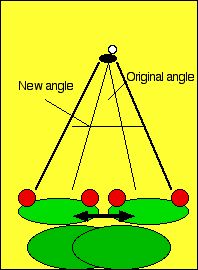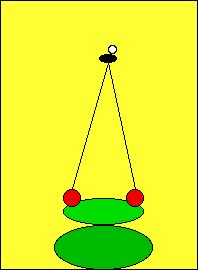Taxes
What does an animal do when it has a specific need, such as food, a higher
humidity environment, or shelter from the sun, and has information about the
location of the needed resource? It may engage in an directed
search, or taxis. There's a small family of terms surrounding the basic word
"taxis". For example, an animal that moves towards light is "positively
phototactic", while an animal that flies away from the wind would be "negatively
anemotactic".
The key in tactic orientation is the localization of the source of stimulus.
From a human perspective, its seems like a simple thing to visually identify
the location of an object or to audtiorially find the source of a sound. We
do this by triangulation--our two sensory organs (two eyes, two ears) simultaneously
perceive the stimulus and we use the difference in perception between between
the two organs to calculate distance/direction. In a simple sense visual triangulation
gives us our ability to tell how far away an object is, although in reality
we use addtional strategies to refine this information. Key to visual or auditory
localization of a stimulus is simultaneous perception of the
stimulus by the paired sense organs.
|
In this fanciful drawing, something vaguely resembling
a frog determines the distance of its prey, a fly, by triangulating
on it. The angles of the triangle depend on the distance of the prey
from the frog. Triangulation allows the "frog" to accurately
strike with its tongue. |
Simultaneous perception isn't always possible. Again, putting
this in a human frame of reference, we (along with most vertebrates) have only
one nose, which corresponds to a single sense organ. This would seem to make
triangulation impossible. What is the solution? With a single sense organ, sequential
perception allows triangulation. By moving the sense organ from side
to side, a triangle can be created in time sequence. Watch a dog with its nose
to the ground, following a scent. It stays on course to find the scent be using
small side-to-side movements of its nose, triangulating on the scent source.
Many animals (grasshoppers and lizards are great examples) combine
simultaneous with sequential sensory strategies to maximize their accuracy in
triangulation. By moving their heads back and forth while triangulating on a
prey item or a spot to jump towards, they increase the angle, making their measurement
more accurate. This makes it as if their eyes are further apart.

page 6-*
copyright ©2003 Michael D. Breed, all rights reserve

